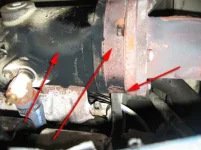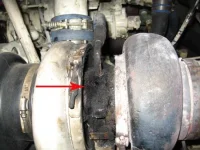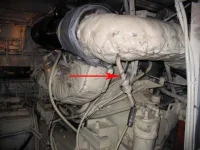Liquid Asset
Well-known member
- Joined
- Jun 7, 2005
- Messages
- 871
- Status
- OWNER - I own a Hatteras Yacht
- Hatteras Model
- Not Currently A Hatteras Owner
Ok, After taking all of my old exhaust blankets off yesterday I found what appears to be the leak. I am having trouble Identifying it. It appears that the exhaust leak is coming from the seal identified by the arrow on the right.
The part on the right that is not painted was covered by an exhaust blanket. It appears that the leak is coming from where the middle arrow is. But I can not imagine that there would be a leak there. Doesnt the large spacer keep the water in the exhaust manifold?
If yall could shed some insight onto this I woudl appreciate it.
The part on the right that is not painted was covered by an exhaust blanket. It appears that the leak is coming from where the middle arrow is. But I can not imagine that there would be a leak there. Doesnt the large spacer keep the water in the exhaust manifold?
If yall could shed some insight onto this I woudl appreciate it.
Attachments
Last edited:




